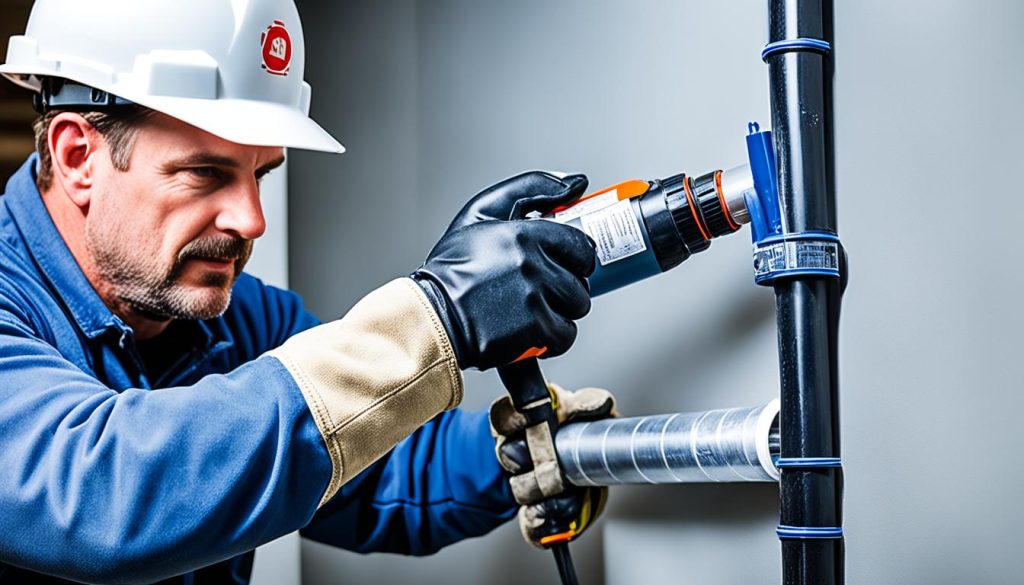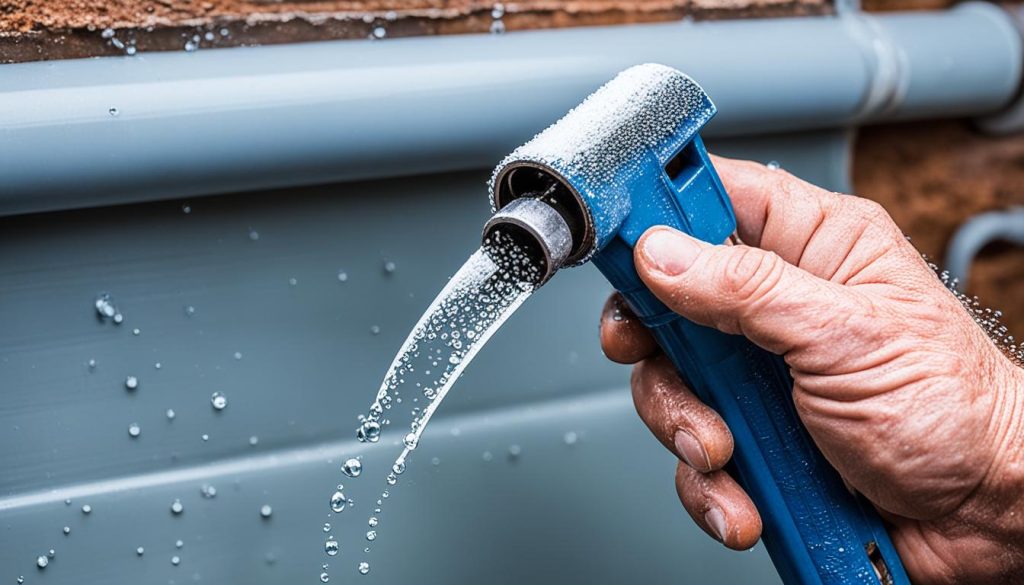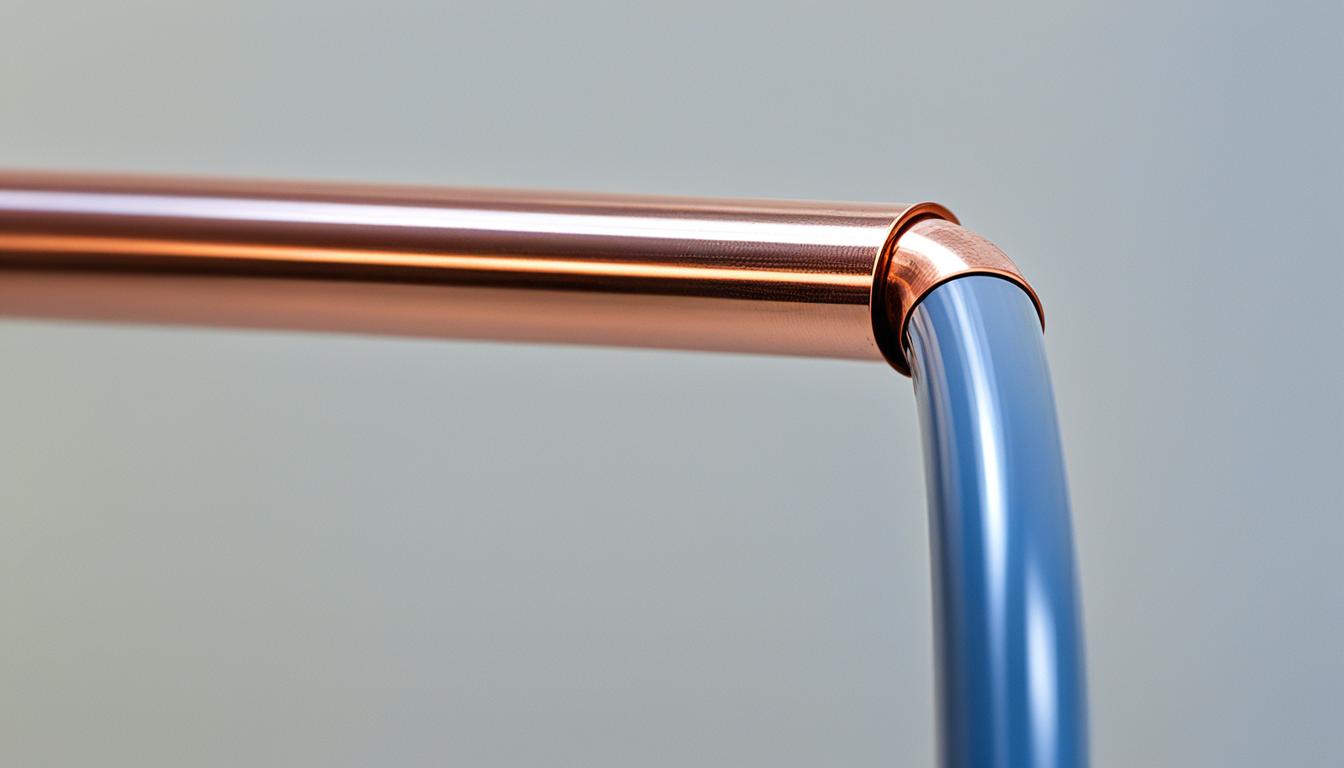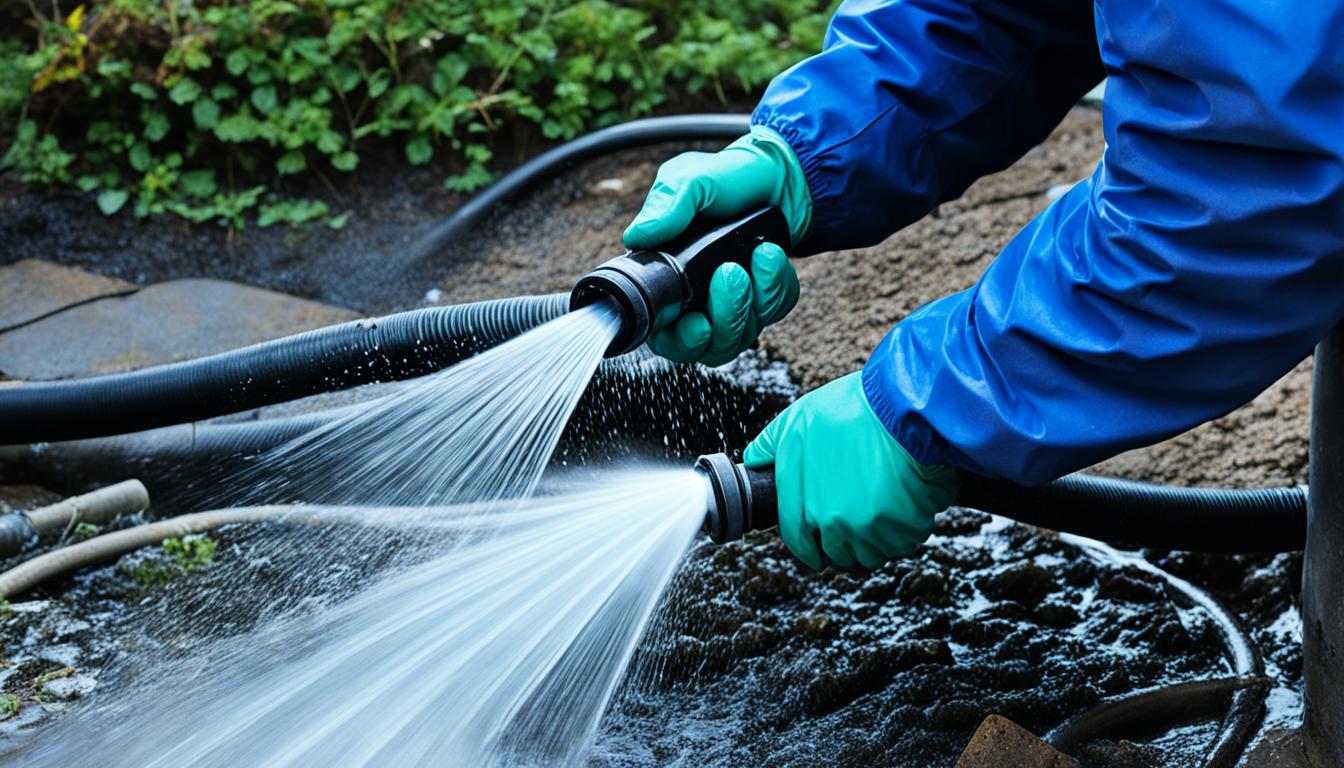Plumbing Tips: How to Disconnect PVC Pipe
When it comes to disconnecting PVC pipe, many people are surprised to learn that once it has been joined together with solvent cement, it is permanently bonded. The chemical reaction between the PVC and the cement creates a strong and durable connection, known as a solvent weld, making it challenging to separate the pipe and fittings.
However, fear not! There are alternative methods to remove glued PVC fittings, allowing you to repair or replace a piece of pipe or fitting without starting from scratch. In this article, I’ll share with you several techniques and tips on how to disconnect PVC pipe effectively.
Key Takeaways:
- To disconnect PVC pipe, twisting the pipe and fitting apart before the cement sets can be effective.
- If twisting doesn’t work, cutting off the joint with a hacksaw is another option.
- Heating up the joints can soften the PVC and make it easier to disconnect.
- Remember to follow the required standards when removing pipe or fittings in pressure applications.
- While PVC cannot be unglued, alternative methods like cutting out and replacing the pipe or sanding the pipe can be used to remove glued PVC fittings.
Twisting Apart the Pipe and Fitting
One effective method to disconnect PVC pipe is by twisting the pipe and fitting apart before the cement sets. This technique requires applying considerable force while simultaneously twisting and pulling. It’s important to note that this method is most successful within the first two minutes of the cement being applied. By twisting in the same direction as when the connection was made, you can attempt to break the solvent weld that has started forming between the pipe and the fitting.
To disconnect PVC pipe using the twisting method, follow these steps:
- Ensure that there is no pressure within the pipes and the cement has not fully set.
- Grasp the pipe and fitting firmly.
- Apply force in a twisting motion, while also pulling the pipe and fitting apart.
This method requires physical strength and may not be suitable for all situations. It is more effective for smaller pipe diameters and non-pressure applications. If the pipe and fitting are tightly bonded, it may be necessary to explore other disconnecting techniques.
Cutting Off the Joint with a Hacksaw
If twisting the pipe and fitting apart doesn’t work, another method to disconnect PVC pipe is by cutting off the joint with a hacksaw. This technique allows for a clean and precise removal of the glued joint. Before proceeding with this method, it’s important to identify where the mistake was made or determine the best solution for your specific situation.
In most cases, PVC fittings are less expensive than the pipe itself. Therefore, cutting off the fitting with a hacksaw is a viable option. The length of the pipe lost with the fitting can be replaced with a coupling or nipple, depending on the application.
To cut off the joint with a hacksaw, follow these steps:
- Measure and mark the area of the PVC pipe and fitting that need to be removed.
- Secure the pipe and fitting in a vise to prevent it from moving during cutting.
- Align the hacksaw blade with the marked area and begin cutting through the pipe.
- Apply steady, even pressure while cutting to ensure a clean and straight cut.
- Continue cutting until the pipe and fitting are completely separated.
Once the joint has been cut, remove any burrs or rough edges using a file or sandpaper. This will ensure a smooth and even surface for reinstallation or replacement.
Remember to exercise caution while using a hacksaw and wear protective gloves and eyewear to prevent any potential injuries.
By using a hacksaw to cut off the joint, you can easily disconnect PVC pipe and make necessary repairs or replacements. This method is effective and cost-efficient, allowing you to maintain the integrity of your PVC plumbing system.
Heating Up the Joints
One effective method to disconnect PVC pipes is by applying heat to the joints. Heating up the PVC can soften and weaken it, making it easier to separate the connection. By directing heat onto the joint, you can gradually heat the PVC and start pulling the pipes apart.
When using heat to disconnect PVC pipe, it’s important to exercise caution to avoid any potential hazards. Here’s a step-by-step guide:
- Start by gathering the necessary materials to safely disconnect the PVC pipe:
| Materials | Tools |
|---|---|
| Heat gun or blow dryer | Gloves |
| Protective eyewear | Heat-resistant cloth or gloves |
- Put on the appropriate safety gear, such as gloves and protective eyewear, to protect yourself during the process.
- Use the heat gun or blow dryer to apply heat to the joint, moving it back and forth to distribute the heat evenly.
- Continue heating the joint for a few minutes until the PVC becomes pliable.
- Once the PVC is heated and softened, gently pull the pipes apart, taking care not to apply excessive force that could cause damage.
- Inspect the pipes and fittings to ensure they are free from any residual adhesive.
It’s important to note that when using heat to separate a PVC pipe from a fitting, both the pipe and the fitting should not be reused in pressure applications. The heat can compromise the integrity of the PVC, making it unsuitable for high-pressure environments.
Now that you’ve learned the method of heating up the joints to disconnect PVC pipes, let’s move on to exploring alternative techniques in the next section.
Alternatives to Ungluing PVC
While it’s not possible to unglue PVC once it has been joined with solvent cement, there are alternative methods for removing glued PVC fittings. These methods can be effective depending on the specific situation and the materials involved. Here are some alternatives to consider:
1. Cutting Out and Replacing the Pipe
If possible, cutting out and replacing the pipe can be a viable option. This method involves removing the glued fitting along with a section of the pipe and replacing it with a new fitting and pipe. It’s important to ensure that the replacement parts are compatible with the existing plumbing system.
2. Twisting the Pipe in Opposite Directions
In some cases, twisting the pipe in opposite directions can help break the bond created by the solvent cement. This method requires applying consistent and opposite twisting forces to the pipe and fitting simultaneously. It’s important to note that this method may not be effective if the bond is too strong or if the pipe and fitting are tightly secured.
3. Heating the Pipe with a Heat Gun
Heating the pipe with a heat gun can soften the PVC and make it easier to separate the fittings. Start by applying heat to the joint area and gradually increase the temperature until the PVC becomes pliable. Be cautious not to overheat the pipe as it can cause damage. Once the PVC is softened, carefully twist and pull the fittings apart.
4. Sanding the Pipe to Remove the Glue
If the glued fittings cannot be easily removed, sanding the pipe can help remove the glue residue. Start by using a coarse grit sandpaper to sand down the areas with glue distortion and color. Then, gradually move to a finer-grit sandpaper to achieve a smoother finish. It’s important to note that excessive sanding may affect the ability to properly join the PVC pipe again.
| Method | Description |
|---|---|
| Cutting Out and Replacing the Pipe | Remove the glued fitting along with a section of the pipe and replace it with new components. |
| Twisting the Pipe in Opposite Directions | Apply consistent and opposite twisting forces to break the bond created by the solvent cement. |
| Heating the Pipe with a Heat Gun | Softens the PVC, making it easier to separate the fittings by twisting and pulling. |
| Sanding the Pipe to Remove the Glue | Remove glue residue by sanding down the areas with distortion and color using progressively finer grits of sandpaper. |
Tools and Materials Needed
When it comes to disconnecting PVC pipe, having the right tools and materials can make the process much easier. Here are the essential items you’ll need:
1. Hacksaw
Having a quality hacksaw will allow you to cut through the pipe if twisting it apart isn’t successful. Make sure to choose a blade suitable for cutting PVC.
2. Pipe Cutter
A pipe cutter is a convenient tool for cleanly cutting through PVC pipe without the need for a hacksaw. This tool provides a more precise cut and can be an excellent alternative to the hacksaw method.
3. Heat Gun
A heat gun can be used to soften the PVC and facilitate the disconnection process. It’s important to use caution when using heat, as excessive heat can damage the pipe or fitting.
4. Sandpaper
Sanding down the glue residue after disconnecting the PVC pipe can make it easier to join new fittings or remove any remaining traces of adhesive. Start with a coarse grit sandpaper and gradually work your way to a finer-grit sandpaper for a smooth finish.
5. Acetone
If you need to remove glue residue from materials other than PVC, acetone can be a helpful solvent. Apply the acetone to a cloth or sponge and gently scrub the area to remove the remaining glue.
6. Safety Equipment
Always prioritize safety when working with PVC pipe. Wear protective gloves, safety glasses, and a dust mask to protect yourself from any potential hazards.
| Tool/Material | Description |
|---|---|
| Hacksaw | A quality hacksaw for cutting through PVC pipe |
| Pipe Cutter | A tool for precise cutting of PVC pipe |
| Heat Gun | Used to soften the PVC for easier disconnection |
| Sandpaper | For sanding down glue residue |
| Acetone | A solvent for removing glue residue on different materials |
| Safety Equipment | Gloves, safety glasses, and dust mask for protection |
Removing PVC Glue
If you’ve managed to separate the PVC pipes, you may want to remove the glue from the pipes. Glue residue can be removed by sanding down the distortion and colored areas, starting with a coarse grit sandpaper and progressing to a finer-grit sandpaper. It’s important to note that excessive sanding may affect the ability to properly join the PVC pipe again. Additionally, on other materials besides PVC, scraping off as much glue as possible and using a solvent like acetone can help remove the remaining glue residue.
Source Links
- https://www.pvcfittingsonline.com/resource-center/how-to-unglue-pvc-fittings/
- https://www.thespruce.com/how-to-remove-pvc-glue-5080786
- https://home.howstuffworks.com/home-improvement/plumbing/how-to-unglue-pvc-pipe.htm
- Investing Wisely: How Windows & Doors in Boost Property Value and Financial Health - April 24, 2025
- The Financial Impact of Personal Injuries: Why Legal Help Matters for Business Owners - April 16, 2025
- The Hidden Financial Costs of Domestic Assault: What Business Owners Need to Know - April 16, 2025














